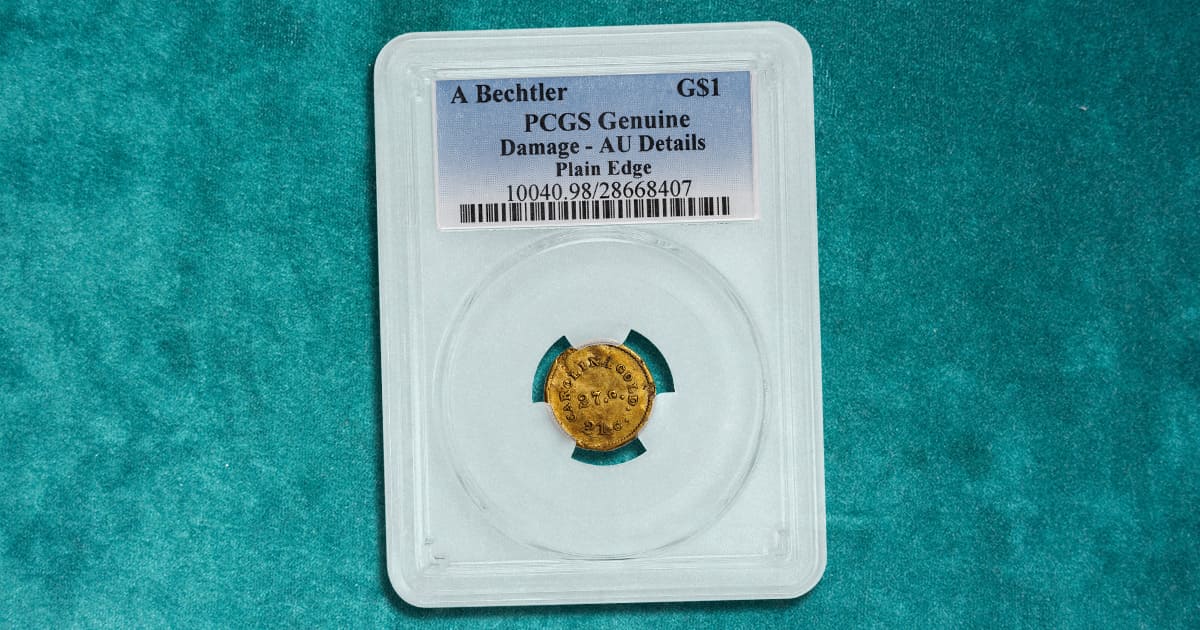
North Carolina Gold and Bechtler Coins
Gold Hill, Gold Pit Creek, Golden Valley, Gold Mine Branch—these and other similar names can be found today on modern maps of North Carolina. They are names that recall an important part of this state’s past, a time when the ring of picks and the rumble of explosives echoed throughout the foothills of western North Carolina. There, decades before the more famous gold strike in California in 1848, prospectors and miners panned, dug, and blasted millions of dollars in gold from the rocky terrain. During the peak years of gold production in North Carolina, between the late 1820s and 1830s, the state’s mining industry employed over 30,000 people and ranked second only to agriculture in its importance to the economy.
Today, the coins that survive from the Bechtler family’s mint in Rutherford County serve as reminders of North Carolina’s rich gold history. High-grade examples of the dollars, “quarter eagles” ($2.50), and “half eagles” ($5.00) produced by the Bechtlers are on permanent exhibit in the North Carolina Collection Gallery. Herman Bernard of High Point, N.C., donated a superb twenty-four-coin set of Bechtler gold to the University in 1981.
Just two months before his death in January 1999, Herman Bernard attended the opening of the Gallery’s “Hard Cash & Hard Times” exhibition. In the photo at right, the High Point collector sits next to the special safe in which his donated set of Bechtler coins was first on permanent display.
Gold nuggets and dust direct from the mine were not easy to use in commerce since weight and purity would need to be assessed. Mints do this when they produce coins, but the nearest federal mint was in Philadelphia, a long and dangerous journey from the gold fields of North Carolina. The Bechtlers, who established a reputation for producing honest coins, gave miners a local alternative. Even after a federal mint was opened in Charlotte, producing its first coins in 1838, the Bechtler mint continued into the 1850s.
The gold dollar, above right, is crudely made, like all the Bechtler coins. Errors such as the reverse N were not uncommon on privately made coins and paper money. If produced by accident or ignorance, such error examples were sometimes initially undetected. Nevertheless, they were issued until the coin die or printing plate could be corrected.
Bechtler coins were counterfeited at the time. The base metal $2.50 example, above left, was gold plated at one time. How long it might have circulated before discovery is unclear.
Expand your collection today and shop our assortment of Pre-1933 U.S. Gold Coins.




